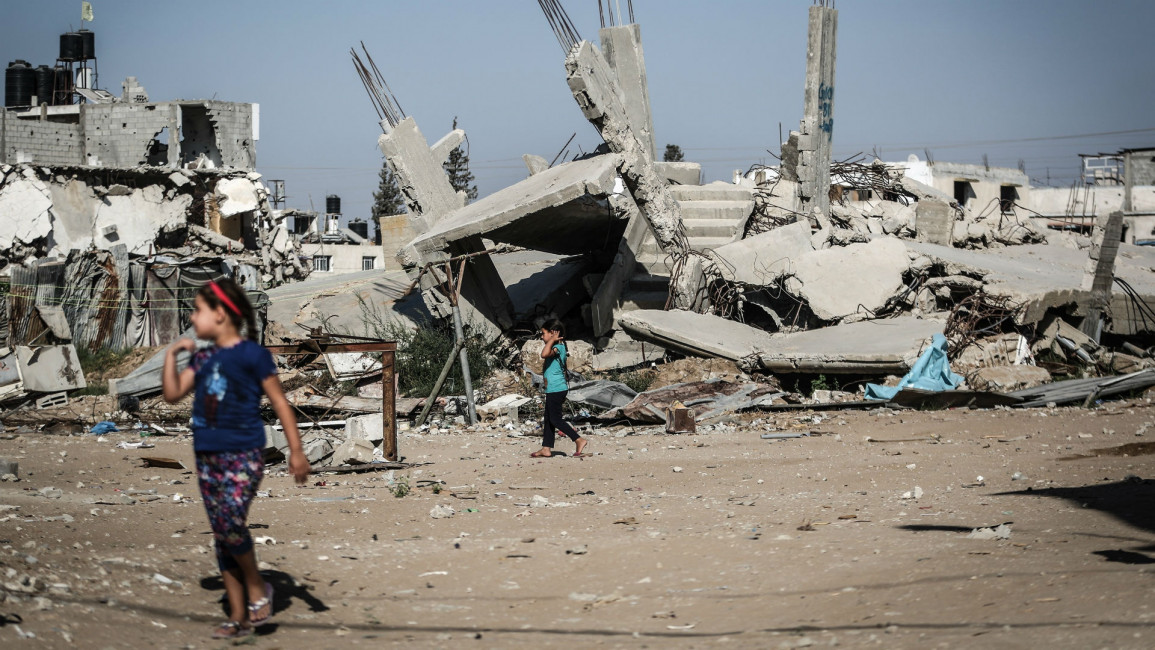Gaza could be 'uninhabitable by 2020' warns UN
A new report by the UN released on 1 September warns that Gaza could be uninhabitable by 2020 if current political and economic trends caused by Israeli policies continue.
The UN Conference on Trade and Development report also said that the number of Israeli settlers in Area C, which makes up 61 percent of the West Bank area, has quadrupled since the Oslo Accords in 1993 and 1995 so that they now outnumber Palestinians.
In 2014, the economy of the occupied Palestinian territory witnessed the first recession since 2006 and the second consecutive decline in gross domestic product (GDP) per capita, as a result of Israel's assault on the Gaza strip.
Unemployment in the oPt has now reached thirty percent, which has a significant impact on the capacity of a third of households to feed themselves.
During the first four months of 2015, Israel once again withheld Palestinian tax revenues on imported goods equal to $700 million after the Palestinian Authority applied for membership of the Internaional Criminal Court.
Tax revenues accounted for 75 per cent of the Palestinian Authority budget in 2014.
| Israel has withheld $3 billion in tax revenues over the past two decades. |
This has created a liquidity crisis that has slowed down economic activities and will seriously affect GDP growth in 2015.
Israel has withheld $3 billion in tax revenues over the past two decades, and failed to pay hundreds of millions of dollars in interest on these sums.
This situation in the oPt has been exacerbated by the usurpation of land and resources by settlers.
Destruction in Gaza
However, the situation in Gaza is much more acute than the West Bank, with unemployment now reaching 44 percent – the highest level ever recorded.
"Socioeconomic conditions [in Gaza] are at their lowest point since 1967," the report stated.
The Gaza strip has been devastated by three Israeli military invasions since 2006, the last being Israel's full-scale military operation in 2014.
These have compounded eight years of economic blockade and shattered Gaza's "ability to export and produce for the domestic market, ravaged its already debilitated infrastructure, left no time for reconstruction and economic recovery."
In total, 2,200 Palestinians were killed in Israel's assault on Gaza in 2014.
In addition, 500,000 were displaced – nearly a fifth of the 1.8 million residents living in the strip, and 20,000 homes, 60 hospitals and health centres, 247 factories and hundreds of shops and businesses were severely damaged.
The war also forced the PA to double its spending in Gaza to cover emergency medical costs causing its deficit jump to $1.6 billion.
"The most recent military operation compounded already dire socioeconomic conditions and accelerated de-development in the occupied Palestinian territory, a process by which development is not merely hindered but reversed," said the report.
| Ninety-five percent of drinking water available in Gaza from coastal aquifers is now unsafe to drink. |
Since the 2014 war Gaza's economy has had little chance to recover, especially as reconstruction efforts have been relatively slow compared to the level of destruction.
In addition, 95 percent of drinking water available in Gaza from coastal aquifers is now unsafe to drink, and that 72 percent of households relied on UN-supplied rations in May 2015, according to the report.
Israel also unilaterally adds high interest rates and deducts non-payment from the PA tax revenues for delays or inability to pay for sewage services, water and electricity that the territories import from Israeli facilities.
"The late payment penalties plus added interest charges unilaterally set by Israel are excessive as they exceed market interest rates," the report said.
Shortfall in donor funding
The report also said that "contrary to claims by some observers", funds from donor countries and international institutions have been "undermined" primarily by the Israeli occupation and not by mismanagement by the PA.
"The burden of humanitarian crises and occupation-related fiscal losses have entrenched and deepened the Palestinian National Authority's fiscal crisis and diverted donor aid from development to humanitarian interventions," the report stated.
The PA estimated that after last summer's war $4 billion would be needed to return Gaza to 1967 socioeconomic levels. A total of $5 billion was pledged at a donor's conference in Cairo last October, however since then only 27 percent of funds has been received.
The shortfall in donor money means that not a single structure has been rebuild since last summer, said the report.
The situation in Gaza has been further exacerbated by Egypt's decision to destroy tunnels between Gaza and the Sinai, blaming infiltration from Gaza for contributing to militant activity in the peninsula.
The tunnels, however, were used to smuggle goods and supplies into the coastal enclave and provided a vital lifeline for residents in Gaza.
Egypt is reportedly planning to fill the border area with water to flood out any remaining tunnels.



